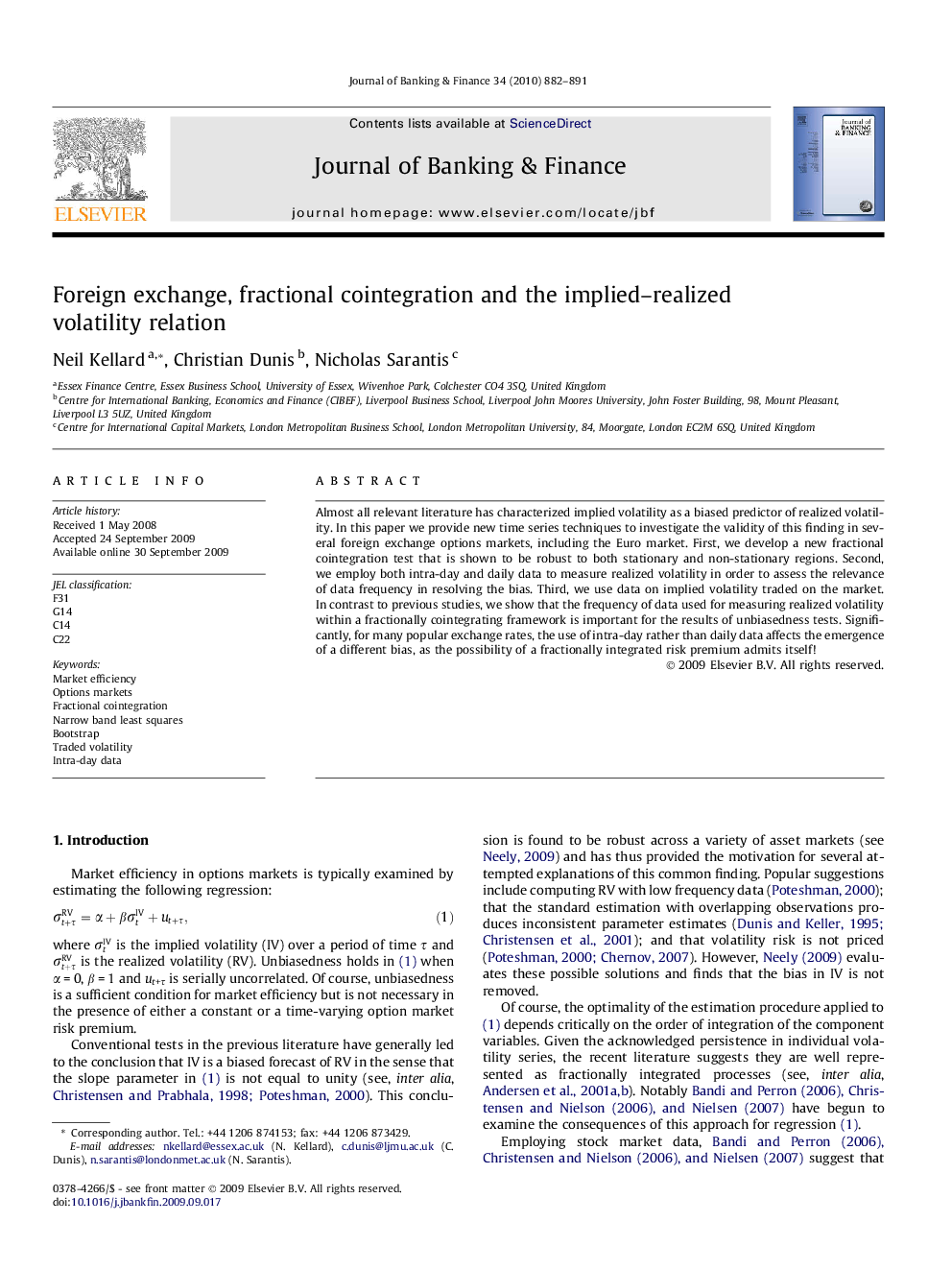| Article ID | Journal | Published Year | Pages | File Type |
|---|---|---|---|---|
| 5090159 | Journal of Banking & Finance | 2010 | 10 Pages |
Abstract
Almost all relevant literature has characterized implied volatility as a biased predictor of realized volatility. In this paper we provide new time series techniques to investigate the validity of this finding in several foreign exchange options markets, including the Euro market. First, we develop a new fractional cointegration test that is shown to be robust to both stationary and non-stationary regions. Second, we employ both intra-day and daily data to measure realized volatility in order to assess the relevance of data frequency in resolving the bias. Third, we use data on implied volatility traded on the market. In contrast to previous studies, we show that the frequency of data used for measuring realized volatility within a fractionally cointegrating framework is important for the results of unbiasedness tests. Significantly, for many popular exchange rates, the use of intra-day rather than daily data affects the emergence of a different bias, as the possibility of a fractionally integrated risk premium admits itself!
Keywords
Related Topics
Social Sciences and Humanities
Economics, Econometrics and Finance
Economics and Econometrics
Authors
Neil Kellard, Christian Dunis, Nicholas Sarantis,
